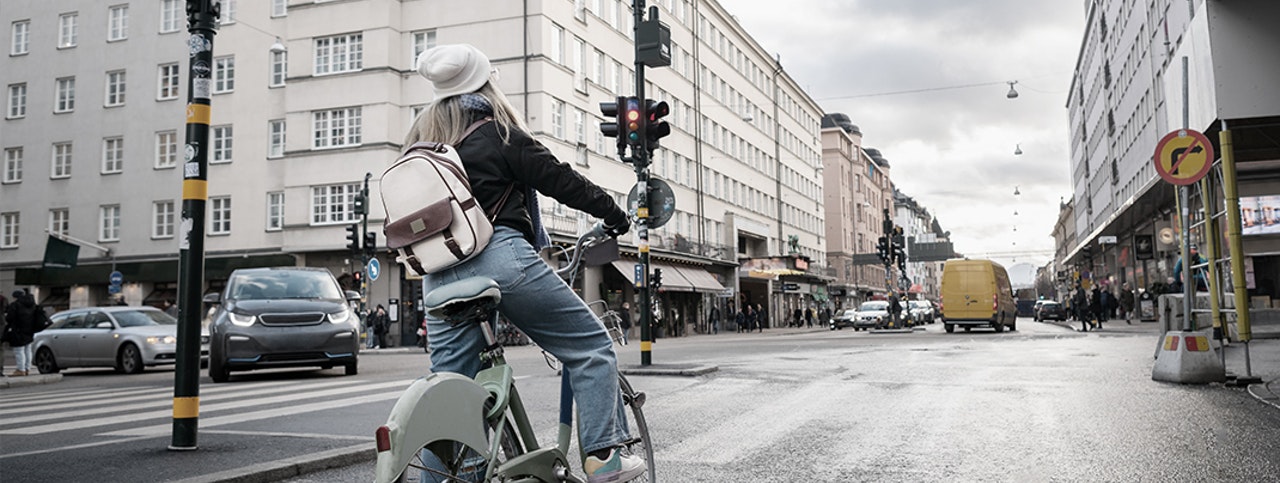It’s been a bumpy road in 2020, but European cities can face future mobility demands with confidence because of their embrace of new technologies and the resilience of their networks.
Singapore claimed the top spot in the 2020 edition of our Urban Mobility Readiness Index, but European cities aren’t far behind — they claim six of the top 10 places. Among the five metrics of our index, European cities rank highest in social impact, market attractiveness, and systems efficiency.
Europe’s success starts with high-performing and robust public transit networks, the beating heart of a dense urban area. The continent also offers a nurturing environment for both emerging mobility technologies, like automation and electrification, and the sharing economy.
Thanks to high-quality, safe, and accessible transit, Zurich takes the top spot in the social impact category of our index. Public transportation is extremely popular, accounting for 40 percent of the city’s modal split – a percentage that’s on par with Singapore and Paris. It’s efficient, affordable, and usually within walking distance for travelers.
With public transit such a reliable method of zipping through Zurich, there isn’t much need for cars. Only 37 percent of Zurich residents own one, allowing the city to claim one of the lowest air, noise, and light pollution levels among major European cities. And for those who do their own driving, they enjoy high-quality and safe roads throughout Switzerland.
Switzerland’s largest city isn’t the only one with a clean and simple way to get around.
Amsterdam ranks first among all cities in systems efficiency – a measure of how well local authorities enhance their mobility network. Indeed, the Dutch city is investing about $59 million in its extensive vision of optimizing bicycle traffic and parking. Wider, connected cycling paths to smooth bottlenecks, storage and parking facilities, and bike bridges over the IJ river are all on the agenda for Amsterdam.
London, the overall runner-up behind Singapore, leads in market attractiveness — meaning the city is skilled at engaging the private sector and securing diverse investments to build out its mobility network. Several important mobility players call the UK capital home.
Perhaps no city typifies Europe’s success more than Stockholm, a newcomer that captures third place in our index.
Sweden’s capital has an affordable and reliable public transit system. It also benefits from high market attractiveness in the government’s investment in charging stations and policy to incentivize electric vehicles. Our research finds that Northern Europe in particular has emerged as a leader in electrification through the availability, and adoption of charging stations throughout the region. Electric vehicles account for more than 10 percent of vehicle sales in cities like Stockholm and Oslo – the highest rate among other European cities. And like Singapore, Stockholm has successfully adopted congestion pricing. The pricing reduced travel time fluctuations between 30 to 50 percent. It not only limits traffic, but it also helps limit carbon emissions, noise, and air pollution, and funds new infrastructure.
In addition to all the forward-looking mobility plans that factor into our ranking, we now heavily weigh how well-prepared cities are for the disruption that natural disasters can wreak on transportation systems – an increasingly important quality considering the events of 2020. And as many reconsider where to live in light of the pandemic, the social qualities that make city living attractive are more important than ever.
The European cities on our index excel in both resiliency and social impact: Barcelona, Madrid, and Amsterdam all factor disaster risk into their city planning while Helsinki, Zurich, and Stockholm offer excellent air quality, public transit affordability, and low noise and light pollution levels.
What separates Europe from other regions is the breadth of high-scoring cities. Asia Pacific and North America both suffer from drastic polarization among their cities – although for different reasons.
Asia Pacific is home to several urban areas with exceptionally strong mobility systems, but many cities like Kuala Lumpur and Mumbai are still developing. High population growth in some of the developing countries in our index has outpaced the ability to manage both transit and road traffic.
In North America, the most successful cities have sizable, dense urban cores that enable highly efficient public transit systems. Those that are still growing, like Toronto or Houston, are surrounded by larger suburban areas that are more dependent on personal vehicles and less served by public transit.
These areas and the Middle East – which suffers on our index from low air quality and congestion scores – are not to be dismissed. In cities across the globe, many are making hefty investments in mobility tech and encouraging a culture of innovation. It’s a formula that has served Europe well, and should position them more strongly for mobility’s next chapter.

